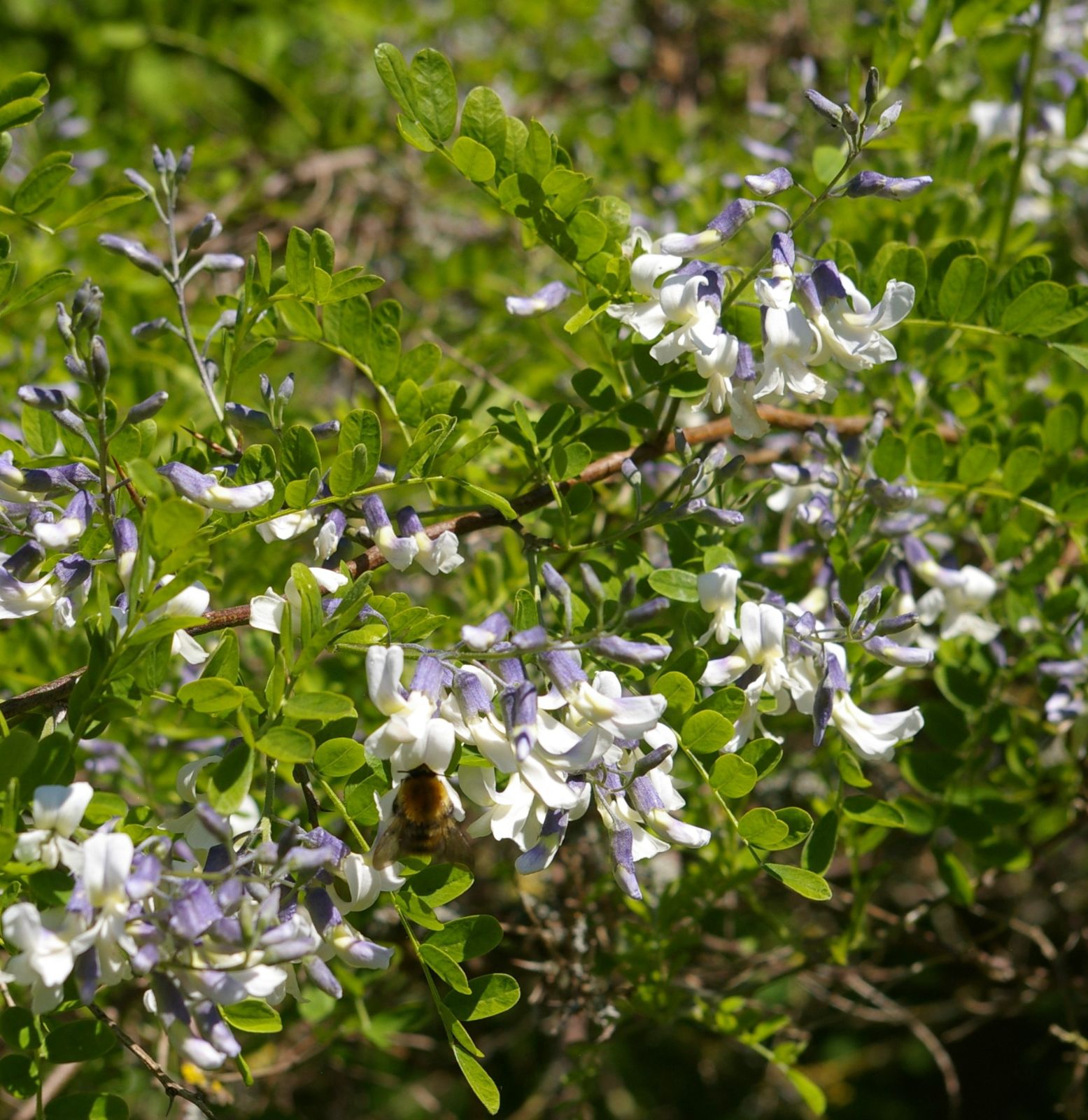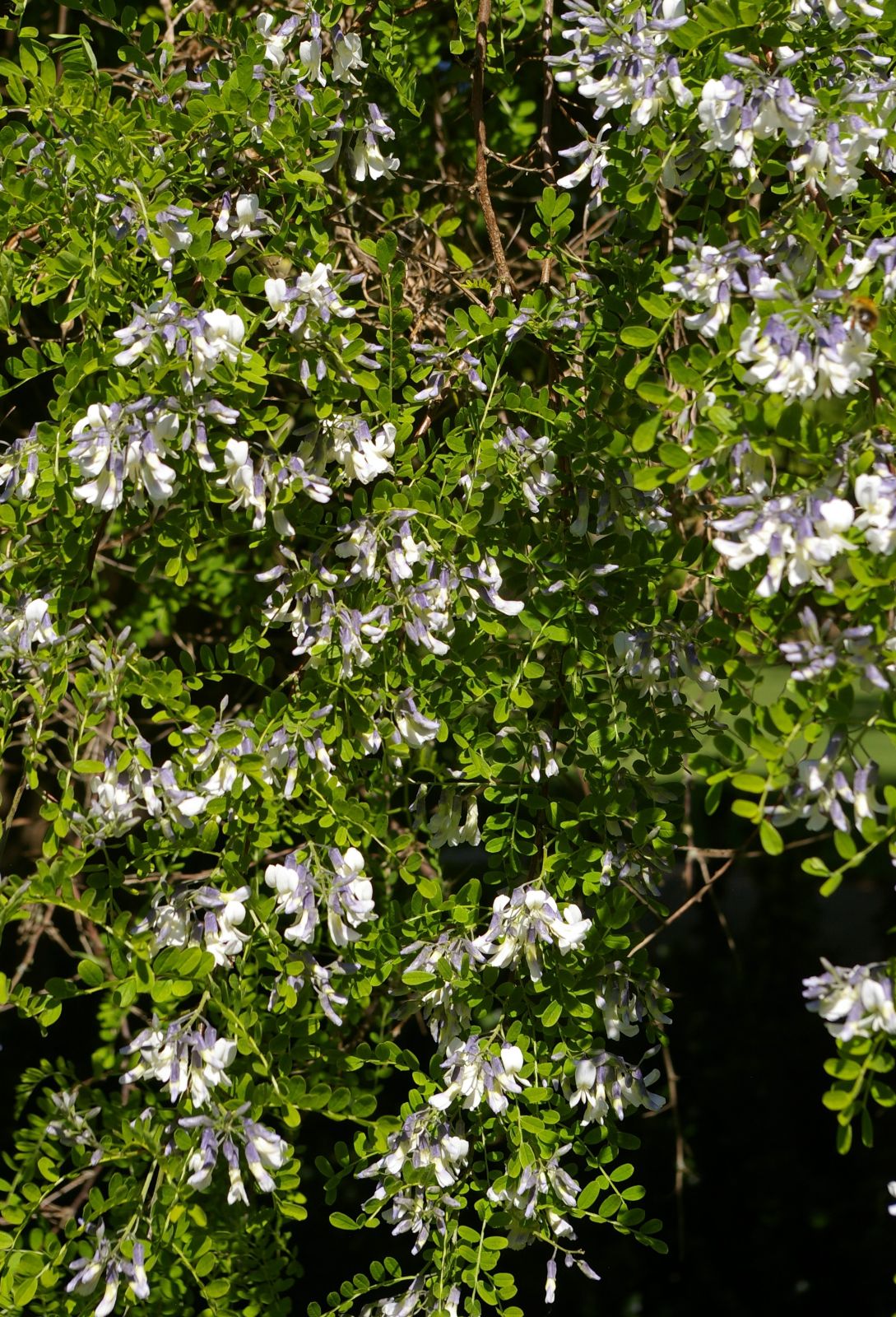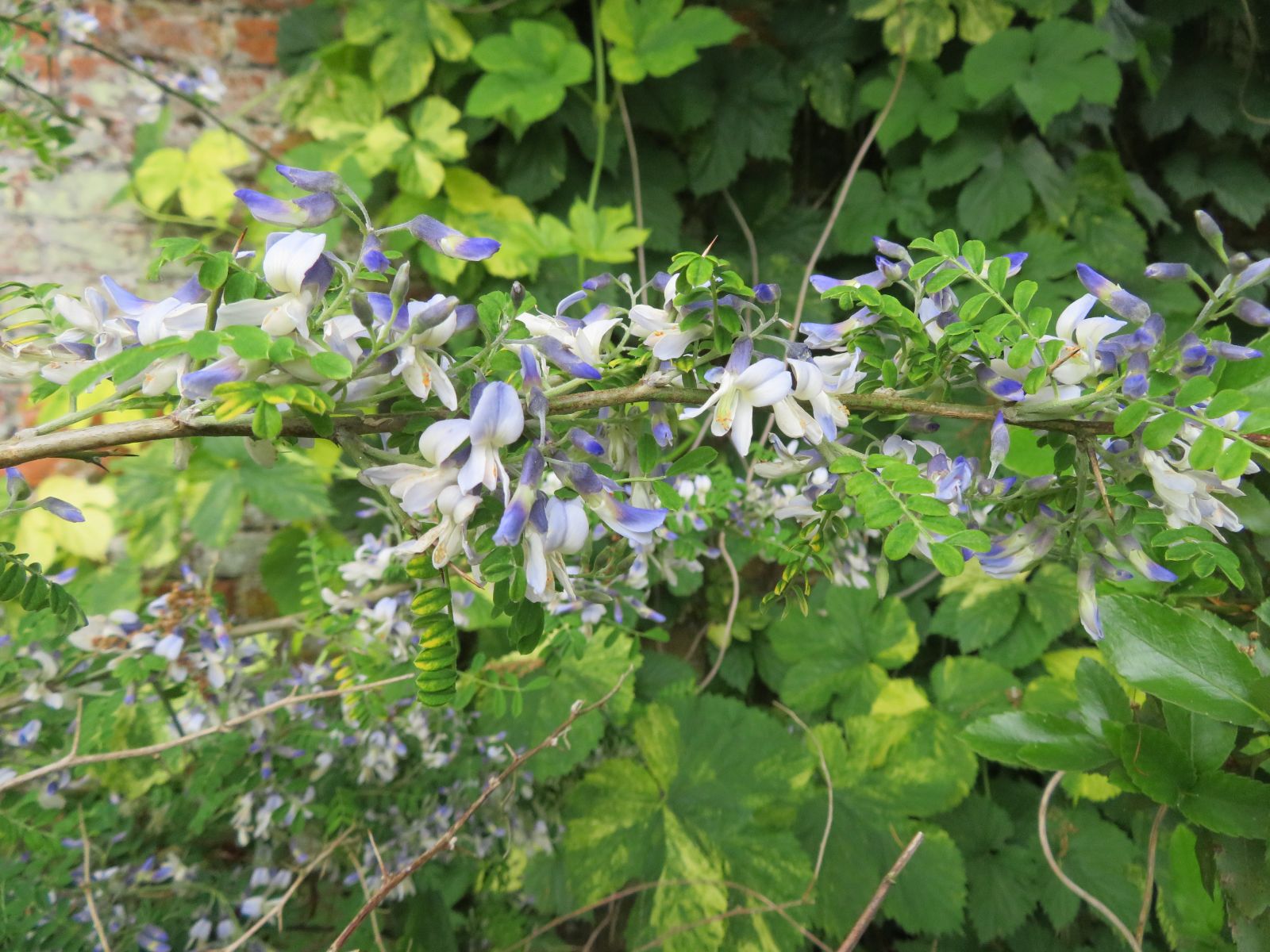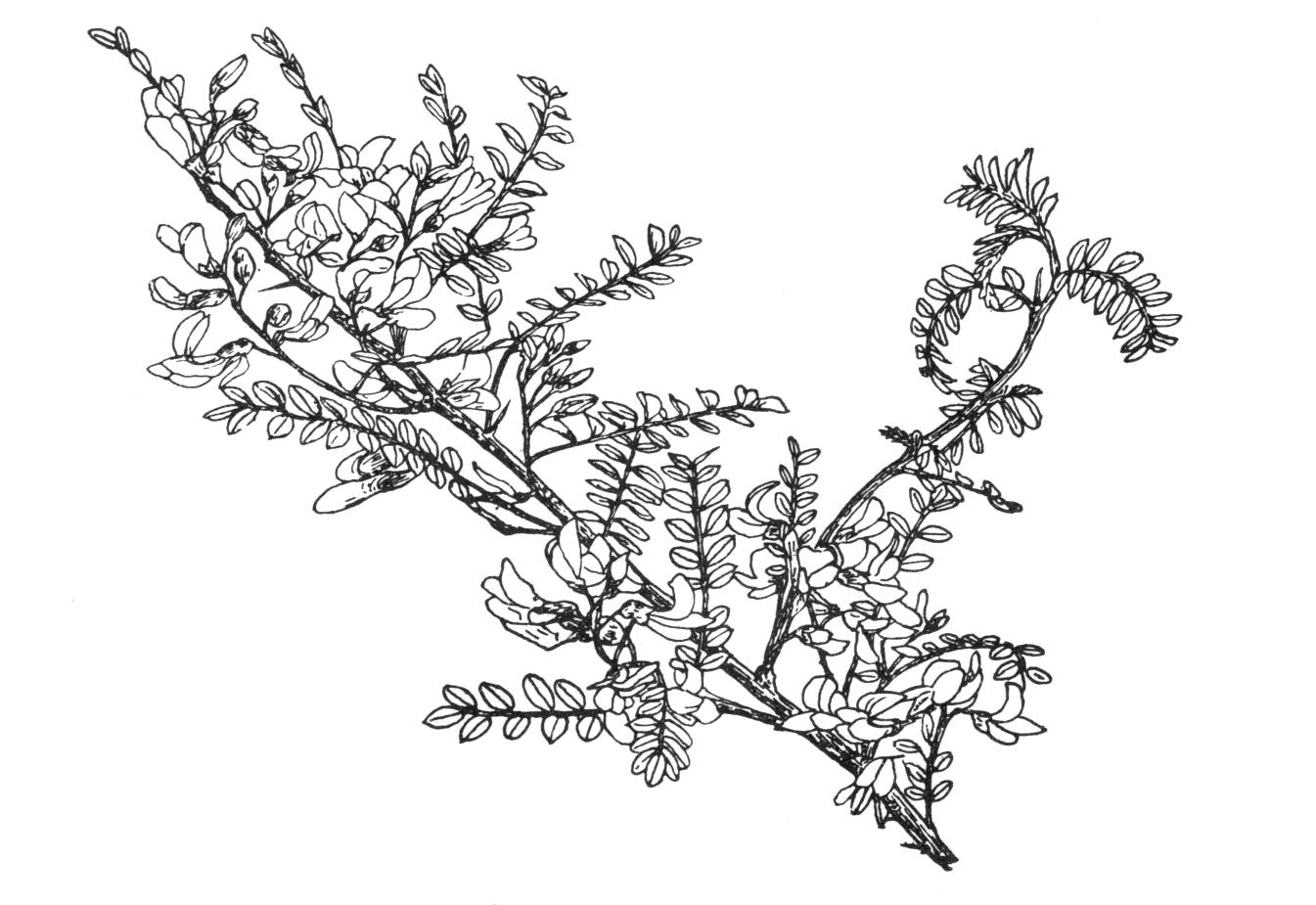Sophora davidii
Credits
Article from Bean's Trees and Shrubs Hardy in the British Isles
Recommended citation
'Sophora davidii' from the website Trees and Shrubs Online (treesandshrubsonline.
Genus
Synonyms
- S. moorcroftiana var. davidii Franch.
- S. viciifolia Hance, not Salisb.
A deciduous shrub of rounded habit, from 6 to 10 ft high, and as much through, the young branchlets covered with greyish down, the year-old branches more or less spiny. Leaves pinnate, 11⁄2 to 21⁄2 in. long, with seven to ten pairs of leaflets, which are 1⁄4 to 3⁄8 in. long, about 1⁄8 in. wide, oval or obovate, with silky appressed hairs beneath. Racemes terminal on short twigs, produced from the buds of the previous year’s shoots, 2 to 21⁄2 in. long. Flowers pea-flower-shaped; petals bluish white; calyx 1⁄8 in. long, downy, short-toothed, violet-blue. Pod 2 to 21⁄2 in. long, about 1⁄6 in. wide, downy, one- to four-seeded, constricted between the seeds. Bot. Mag., t. 7883.
Native of China in the provinces of Yunnan, Szechwan, and Hupeh, up to 13,500 ft. It was introduced in 1897 to Kew, where it has grown well, and proved to be one of the most charming of Chinese shrubs, the branches being loaded with the blue and white racemes in June, their beauty greatly enhanced by the elegant fern-like foliage. It requires a good loamy soil, and a site exposed to full sunshine. According to Henry, in the elevated regions where it grows, it often covers large tracts of barren country, just as gorse docs in Britain. It is propagated by cuttings made of young shoots with a heel of old wood, in July and August, and placed in a gently heated frame.
Nearly related to S. davidii is S. Moorcroftiana (Benth.) Baker, with similar foliage and habit, but which is more spiny, more downy, has smaller leaflets, yellow flowers, and a longer more slender calyx. Native of the drier parts of the Himalaya from Nepal westwards.




